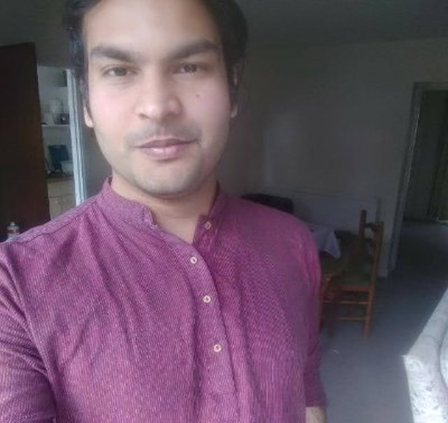
Title: Interaction of molecules with light
Invited talk
Dr. Kishan Menghrajani
Monash University, Australia
Abstract
Open cavities have been put forward as a convenient platform with which to undertake molecular strong coupling. Whilst a number of demonstrations of Rabi- splitting in open cavities have been reported by monitoring reflectivity and/or transmission, it remains unclear whether such structures really drive a molecular resonance into the strong coupling regime [1, 2, 3]. Here we explore a more stringent monitor of strong coupling, the modification of photoluminescence. We examine the emission from a range of dye-doped open, half and full optical microcavities. For each configuration an analysis of the reflectivity data indicates the presence of strong coupling. We find that our open and half cavities show only minor modifications of the photoluminescence spectrum. For the full-cavity, for which the dielectric layer is bound both above and below by a metallic mirror, we find very significant modification, the photoluminescence clearly tracking the lower polariton. Based on our observations we suggest the usual strong coupling criterion based on the coupling strength needs to be supplemented by an additional condition based on the cavity finesse. Accordingly, we propose a new criterion for effective molecular strong coupling [1]. This technique may be of relevance in designing strong coupling resonators for chemistry and materials science investigations to probe a fascinating aspect of molecular strong coupling, a new field that spans physics, chemistry, and materials science and that promises to add cavity quantum electrodynamics to the chemistry/materials toolkit.
Biography
Dr. Kishan Menghrajani obtained his Ph.D. in physics from the University of Exeter, UK where he was primarily interested in exploring the strong coupling between the vibrational modes of molecules and infra-red surface plasmons. His research spans the broad umbrella of Light-Matter interactions. He has recently joined Monash University, Melbourne, Australia as Research Fellow with Prof. Stefan Maier. His skill set revolves around energy-momentum spectroscopy, nanofabrication techniques, FTIR, Raman spectroscopy, and numerical electrodynamic modeling. He is self-motivated researcher with demonstrated expertise in interdisciplinary research areas.

Title: Success in Developing CVD Graphene Coating on Mild Steel and Other Metals for Remarkable and Durable Corrosion Resistance
Plenery talk
Prof. Raman Singh
Monash University, Australia
Abstract
This presentation will discusses the challenges in developing graphene coating by chemical vapour deposition (CVD) on the most common engineering alloy, mild steel, and the recent success in circumvention of the challenges in successful development of CVD graphene on mild steel for durable corrosion resistance of the alloy. Graphene possesses a unique combination of properties (namely, extraordinary impermeability, inertness and toughness) that is ideal for a corrosion resistant barrier. Ultra-thin graphene coatings have been reported to improve corrosion resistance of nickel and copper by two orders of magnitude in aggressive chloride and acidic environment. However, it is extremely challenging to develop CVD graphene on mild steel. The talk provide an overview of the ability of graphene coatings to remarkably improve corrosion resistance of nickel and copper, and critically discusses the challenges in CVD graphene coating of steel, circumvention of the challenges and demonstration of remarkable and durable corrosion resistance of mild steel due to the CVD graphene coatings.
Biography
Professor Raman Singh’s primary research interests are in the relationship of Nano/microstructure and Environment-assisted degradation and fracture of metallic and composite materials, and Nanotechnology for Advanced Mitigation of such Degradations. He has worked extensively on advanced materials (e.g., graphene) for corrosion mitigation, stress corrosion cracking, and corrosion-mitigation (including in the context of advanced civil engineering applications such as seawater sea sand concrete). He is a senior professor at Monash University, Australia. He is/was a Guest Professor at ETH Zurich, Switzerland (2020, 2023, 2024), US Naval Research Lab, Indian Institute of Science, and University of Connecticut. He worked as a scientist at Indian Atomic Energy and as a post-doc fellow at UNSW/Australia. Prof Singh’s professional distinctions and recognitions include: Guest Professor of ETH Zurich, Editor of a book on Cracking of Welds (CRC Press), Lead Editor of a book on Non-destructive Evaluation of Corrosion (Wiley), Editor-in-Chief of an Elsevier and two MDPI journals, leader/chairperson of a few international conferences and numerous plenary/keynote lectures at international conferences, over 265 peer-reviewed international journal publications and 15 book chapter, and several competitive research grants He has supervised 58 PhD students.
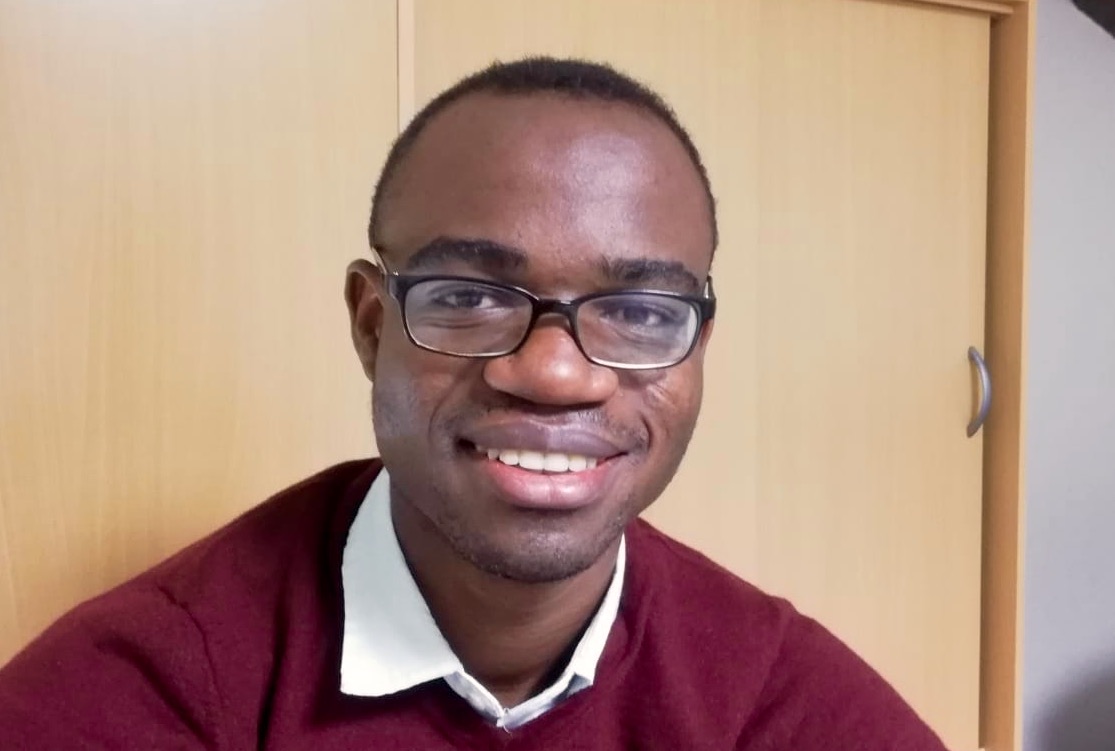
Title: Exploring Mesoscale Fracture Behavior of Cement-Based Composites Using Phase-Field Modeling
Invited talk
Dr. Justin Kinda
Ecole Normale Superieure Paris Saclay, France
Abstract
Porous media is a broad field with applications in various industries and sciences. Understanding the fracture mechanics of these materials is crucial in sectors like oil and gas, geothermal energy, civil engineering, and environmental science. By gaining a more profound knowledge of porous media, we can improve operational efficiency, enhance material performance, and effectively manage fracture-related risks.
Porous media consist of voids within a solid matrix, ranging in size from micrometers to centimeters. The distribution, connectivity, and size of these pores significantly impact the material's mechanical properties. The microstructure, including the characteristics of cement matrix and aggregates, is vital in determining the overall behavior.
We have developed a mesoscopic model for cement-based composites, allowing us to deduce the mechanical behavior of finite element RVE sizes based on constituent properties. This model can be integrated into a finite element solver as a material law, calculating macroscopic properties from individual constituents. It analyzes material responses under stress and strain, separating it into elastic and viscoplastic components. Elastic behavior follows a neo-Hookean material model, while viscoplastic behavior considers rate-dependent deformation. Our modified model predicts fracture initiation and propagation using phase field equations and a Drucker-Prager yield function. Parametric studies investigate the influence of phase properties on stress-strain relationships, highlighting the significance of mechanical properties such as the matrix and interphases. The model accurately predicts fracture behavior in recycled aggregate concrete, addressing structural heterogeneity. This three-phase model provides valuable insights into mesoscopic fracture behavior.
Biography
Dr. Justin Kinda, P.h.D Engineer, experienced in sustainable building materials and fracture modeling. Having obtained my Ph.D. degree from Ecole Normale Superieure Paris Saclay (France) and a double Engineering degree from both École Centrale (France) and École Hassania des Travaux Publics (Morocco), He had the privilege of serving as an R&D specialist at the esteemed University of Luxembourg and as an R&D engineer at EDF. In his career, he was actively worked on sustainable building materials, constantly striving to create innovative solutions that contribute to a greener future.
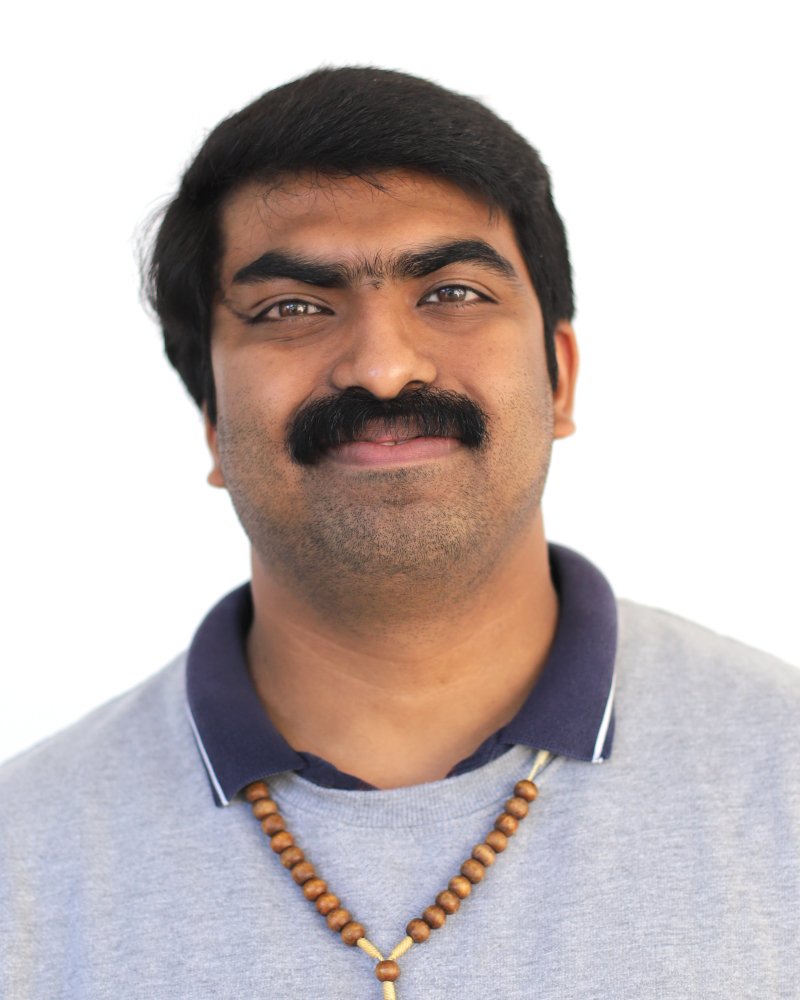
Title: Silk fibroin and recombinant elastin blend nano-coatings for implantable medical devices
Invited talk
Dr. Emmanuel Joseph
CNRS - Centre de Recherche Paul Pascal, France
Abstract
Silicone breast implants are conventionally used to reconstruct the shape and size of the breast in breast cancer patients. However, rate of failure of implants due to formation of capsular contracture is significantly high. Recent studies have shown that coating the surface of the implant with a biocompatible polymer can mitigate this risk. Here, we have modified the surface of implant using a biocompatible natural biopolymer silk fibroin (SF). Further, we have developed formulations of SF with a recombinantly produced elastin-like-peptide (ELP) and compared their performance with a known anti-fouling hydrophilic polymer - polyethylene oxide (PEO). Microscopic and spectroscopic characterization confirm the formation of uniform coatings. These coatings have been also characterized for their ability to resists crack formation. Further, the coatings have been evaluated for their biological performance. Our studies show that addition of 25wt% of ELP to SF significantly enhances the crack resistance for the coatings. In addition, SF/ELP coatings reduce the adsorption of blood plasma proteins by more than 80%. Preliminary analysis shows that the SF/ELP blend coatings are non-cytotoxic and support adhesion, growth and proliferation of fibroblast cells. The study therefore demonstrates that SF/ELP coatings have the potential to mitigate the risk of breast implant failure.
Biography
Emmanuel Joseph has graduated as Bachelor of Technology in Polymer Engineering (2016) from Mahatma Gandhi University College of Engineering (MGUCE, Thodupuzha, India). He obtained his PhD in Engineering Sciences (2022) in the National Chemical Laboratory (NCL, Pune, India), where he investigated fundamental questions on the stability and biocompatibility silk fibroin coatings and established test methods to quantify the adhesion between stiff coating materials on soft substrates. He thus gained a solid multidisciplinary knowledge in the surface functionalization and characterization of biopolymer-based materials. He has also embarked on more applied studies with industrial partners, including the leading cancer care group Prashanti Cancer Care Mission to evaluate novel bio-functional molecules coated medical devices. In 2021, he worked as subject matter expert in 3D bioprinting at Accreate Additive Labs Pvt Ltd, a deep-technology company focused on bringing the benefits of additive manufacturing to clients in healthcare industries. Since November 2022, he is gaining post-doctoral experience at CRPP in the group of Dr. Nicolas Martin on light-responsive coacervate droplets.
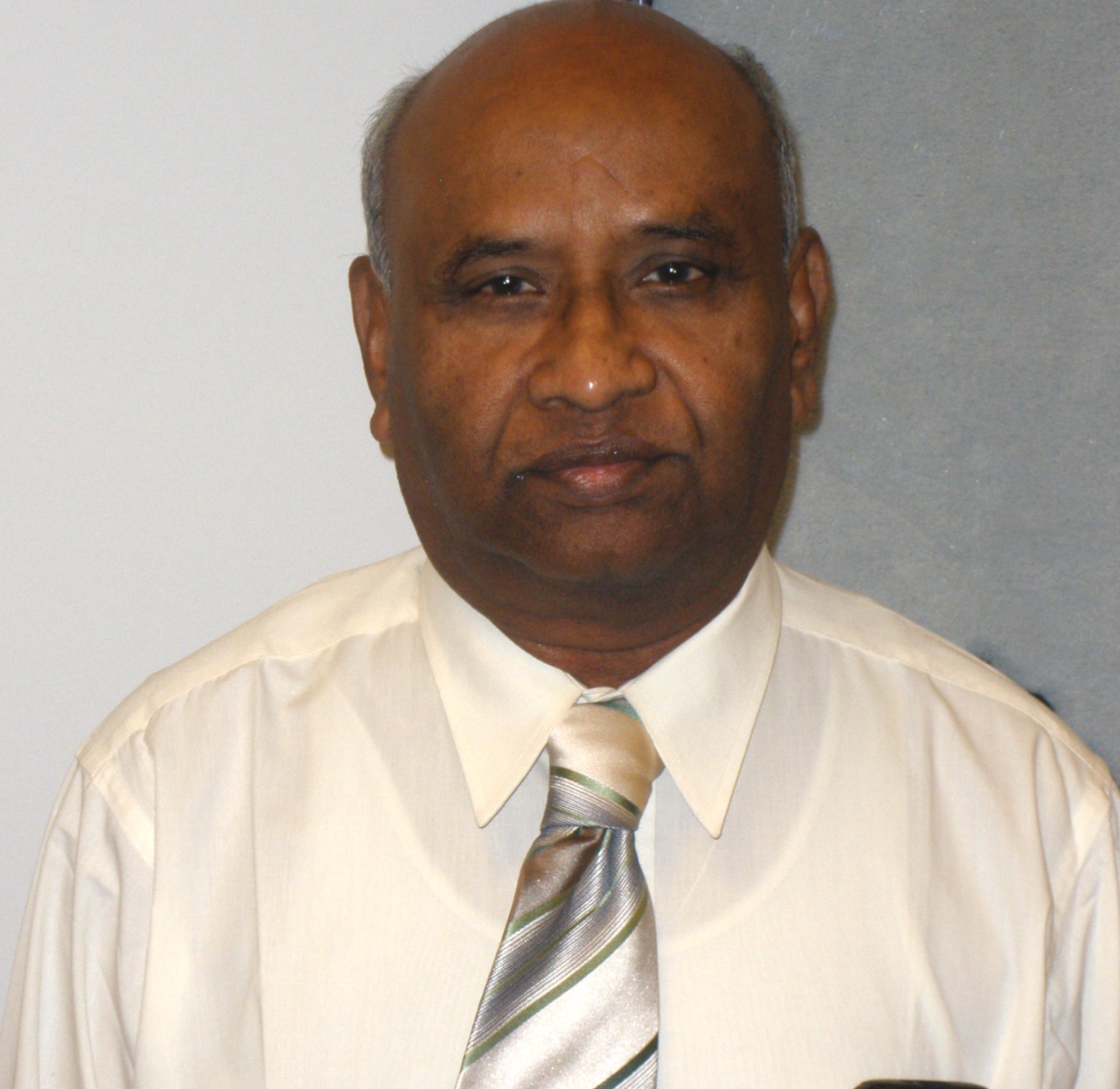
Title: The impact of smart fabric shades and built-in control Strategies on energy savings, building comfort and visual quality
Keynote
Dr. Radhakrishnaiah Parachuru
Georgia Institute of Technology, Atlanta, USA
Abstract
Functionally designed fabric shades with built-in smartness to dynamically change their heat and light transfer properties based on changing external conditions provide opportunities for building occupants to control sunlight penetration for heat reduction, thermal comfort, and visual quality. These regulating shades can potentially reduce the size and capacity of heating and cooling systems. However, the role of shades on energy conservation is not generally considered in current building and energy planning practices, even though automatic shade control is very much a practical reality. The practice of ignoring the energy saving potential of shades in planning stages can change with a broad-based understanding of the impact of shades on energy saving. A few studies available in literature address the impact of shades and their integrated performance on energy consumption and visual quality. Most of these studies, however, do not take into account the important of advances made in the design and application of shading fabrics and systems. Recent advances in software-based simulation tools make it possible to consider different designs and their application variables in studying the impact of shades on heating, cooling and lighting energy savings.
Simulation-based parametric studies using tools such as EnergyPlus, DAYSIM, etc. have been found to provide a good understanding of energy savings under different shade conditions. The multi-parametric simulation runs made possible by the new simulation programs address the role of various building and shading parameters such as geometry, orientation, local climatic conditions, glazing/shade properties, and shade control strategies. They also permit to assess the cumulative energy savings in the presence of integrated lighting controls. The impact of shades can be assessed for heating and cooling the whole building and isolated spaces within the building. Energy savings can also be assessed in the presence and absence of automatic lighting controls. The common software tools used to study visual quality are EnergyPlus, AGI32 and DAYSIM. Several indices that describe visual quality such as daylight glare index (DGI), work plane illuminance, luminance ratios and view clarity can be obtained. Different shade control strategies and integrated lighting controls can be considered with multiple translucent fabric shade colors. The results of several of these studies demonstrate the benefits of automatic shade control strategies with integrated lighting controls as compared to the practice of keeping the shades closed for most part of the day. Important facts established through multiple simulation and experimental studies will be shared in this presentation.
This presentation will also discuss the commercialization potential of selected products that hold immediate promise for commercialization.
Biography
Dr. Radhakrishnaiah Parachuru is • Completed more than 220 applied research projects for the manufacturers and distributors of fiber and polymer products based in multiple states of the US. • Presented in 190 national and international conferences. • Published 58 research papers in refereed science & engineering journals. • Managed six different characterization labs and three process technology labs for 20 years. Upgraded four characterization labs by adding a new SEM and also X-Ray Diffraction, X-Ray Fluorescence, Spectrometry, Rheology, and Thermal Analysis equipment. • Served as faculty member in-charge of laboratory safety for 12 years (24 labs in 4 different buildings). • Served as expert witness in 48 litigations. Testified in court rooms across eight different states within the US. • Resolved dozens of product/material related disputes through independent testing. • Conducted failure analysis, identified root causes and suggested remedies. • Continue to serve as AATCC expert in textile engineering and statistics areas (this is a paid consultancy role since 2004).
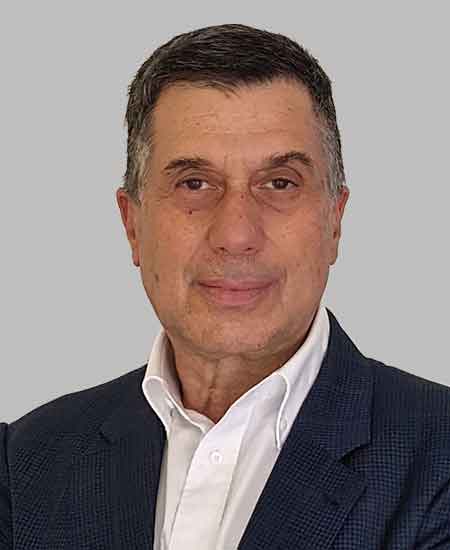
Title: Utilization of lignocellulosic bast and hurd fibers improves tensile properties and reduces weight in injection molded parts where the polymer matrix is polypropylene or polyethylene because of the aspect ratio of these fibers compared to mineral fillers
Keynote
Mr. Robert Ziner
CEO, Advanced Bio-Material Technologies Corporation, Canada
Abstract
Lignocellulosic bast and hurd fibers have long been used as a material in polymer (“plastic”) bio-composites and are reported to possess attractive properties for use in such applications. The bast and hurd fibers from hemp stalks are obtained via decortication, and then further size reduced to 500 microns using a hammermill. This output is then pelletized in combination with a small amount of polymer, before being compounded with matrix polymers, and in some cases with chemical compatibilizers: the resulting “bio-composite” pellets are then injection molded. The pellets created from lignocellulosic fibers which have been compounded with polypropylene and a chemical compatibilizer exhibit the most desirable properties, and the potential of this composite was further studied. ASTM test sticks were then quantitively tested for a number of properties. It was noted that the composites exhibit excellent mechanical properties, including high tensile strength, excellent thermal properties, acceptable impact strength, and an exceptionally low specific density. Also, it was noted that the odour of the bio-composite is clearly in the acceptable range. Furthermore, per life cycle analysis, it was noted that biocomposites provide excellent environmental and social benefits. Lignocellulosic bast and hurd fibers can be used as a useful and environmentally and socially desirable composite material for further studies and applications: The key requirement will be a cost-effective solution to achieve the overall process of producing bio-composite pellets for thermoplastic production.
Biography
Robert Ziner, the CEO of Advanced Bio-Material Technologies Corporation, earned an MBA from the Rotman Management School, at the University of Toronto, Canada. He brings 35 years of Executive Management in large-scale commodity processing and distribution - as well as the development of real-time, AI-driven advanced manufacturing systems for the processing and optimization of natural fibers. Robert has earned multiple patents relating to processing wood and natural fibers in Smart Factory applications. He sits on the board of the Ontario government’s “NGEN” AI 4 Manufacturing Association and has been an invited speaker at 16 conferences over the past 3 years.
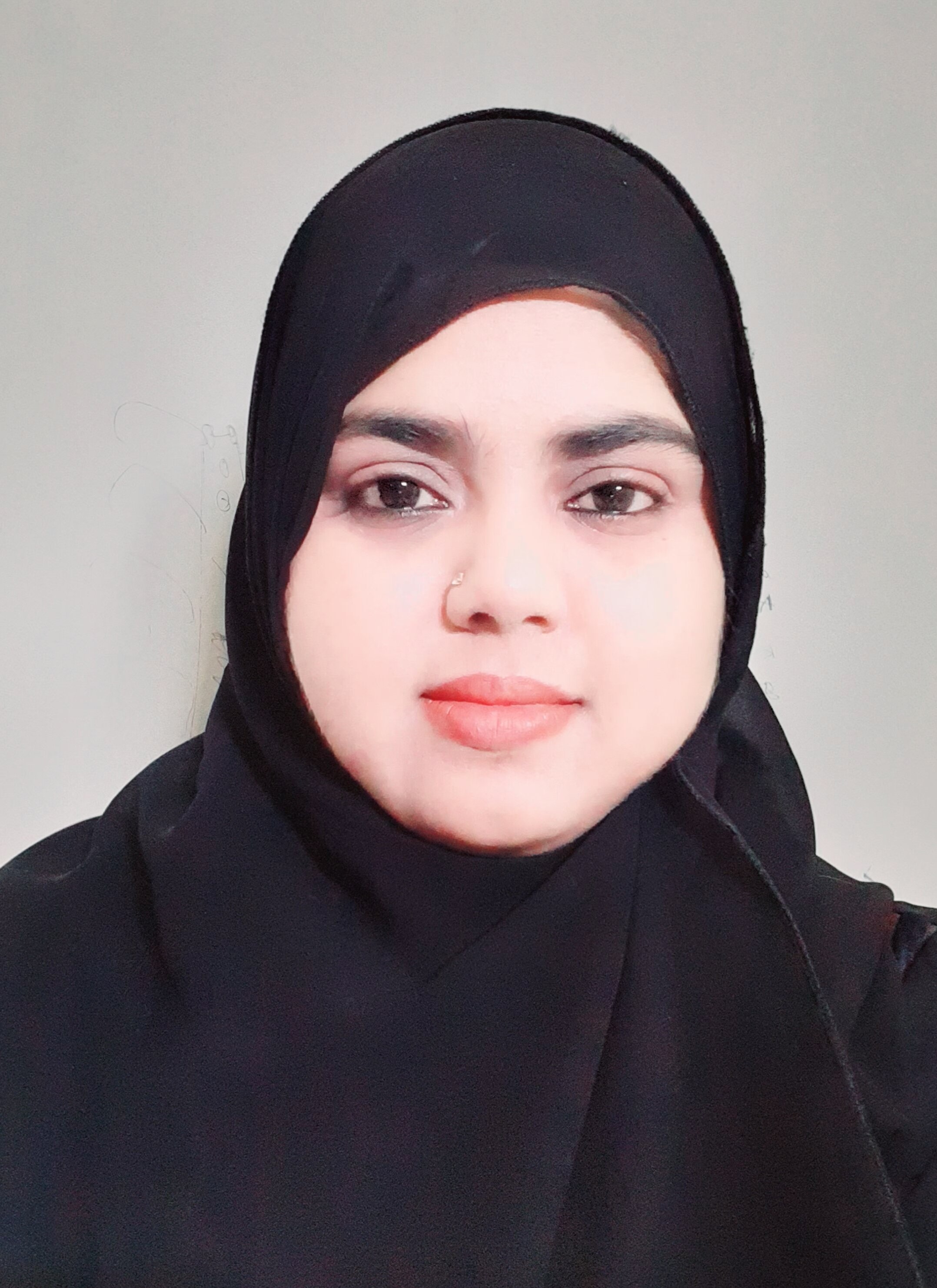
Title: Synthesis, Characterization, and Application of Copper Telluride Nanostructures
Invited talk
Dr. Sumayya M. Ansari
Postdoctoral research fellow, United Arab Emirates University, UAE
Abstract
Copper telluride Cu2-xTe (0 ≤ x ≤ 1) 1D-nanowire (CuTe_0.15) was synthesized on a copper substrate in a single step without a reducing agent and catalyst-free chemical vapor deposition method. This synthesis produced nanowires of uniform diameter of 0.22 ± 0.01 µm with a mean length of 13.89 ± 1.02 µm and horizontal-grown isolated nanowires, as observed by scanning electron microscopy and transmission electron microscopy studies. Selected area electron diffraction studies of the nanowire show the diffraction spot, demonstrating the nanowire's single-crystalline and high-quality crystallinity. The X-ray diffraction pattern analysis confirmed that the so-fabricated nanowires are mixed phases of orthorhombic CuTe and hexagonal Cu2Te structures. X-ray photoelectron spectroscopy found evidence of the presence of both Cu2+ and Cu+ oxidation states of Cu. The ratio of Cu2+ to Cu+ is found to be 1:1.7. Moreover, the influence of Cu substrate thickness is investigated under the same experimental conditions. Our studies show that the thickness of Cu significantly impacts the nanostructure morphology. When the Cu substrate thickness increases by ten, structures (CuTe_1.5) such as 1D nanowires, 2D hexagon sheets, and 3D dendrites become evident. UV-visible absorption studies show that as Cu thickness increases from 0.15 mm to 1.5 mm, the absorption peak shifts from 533 nm to 614.70 nm. The detailed mechanisms of growth of 1D nanowires, 2D sheets, and 3D dendrites were discussed. The electrochemical performance and OER activity of nanostructures were evaluated using a three-electrode configuration. According to a comparative study, 1D nanowire exhibited superior electrochemical performance compared to 2D and 3D nanostructure morphologies.
Biography
Dr. Sumayya M. Ansari is an eminent postdoctoral research fellow at United Arab Emirates University, UAE, with extensive knowledge of materials science, nanotechnology, and advanced characterization techniques. She earned a Ph.D. in 2019 under the supervision of Prof. Y.D. Koleakr, University of Pune, and Prof. Debasis Sen, Bhabha Atomic Research Center (BARC), India. She has substantially contributed to numerous fields, including magnetic ferrite nanomaterials, phase change materials, chemical synthesis, and thin-film fabrication. Dr. Ansari's work has revolutionized our comprehension of magnetic materials, nanomaterials, and their applications, as evidenced by his record of influential publications in prestigious journals. Her unwavering dedication to research, innovation, and the dissemination of knowledge makes her an inspiration to fellow researchers and enthusiasts.
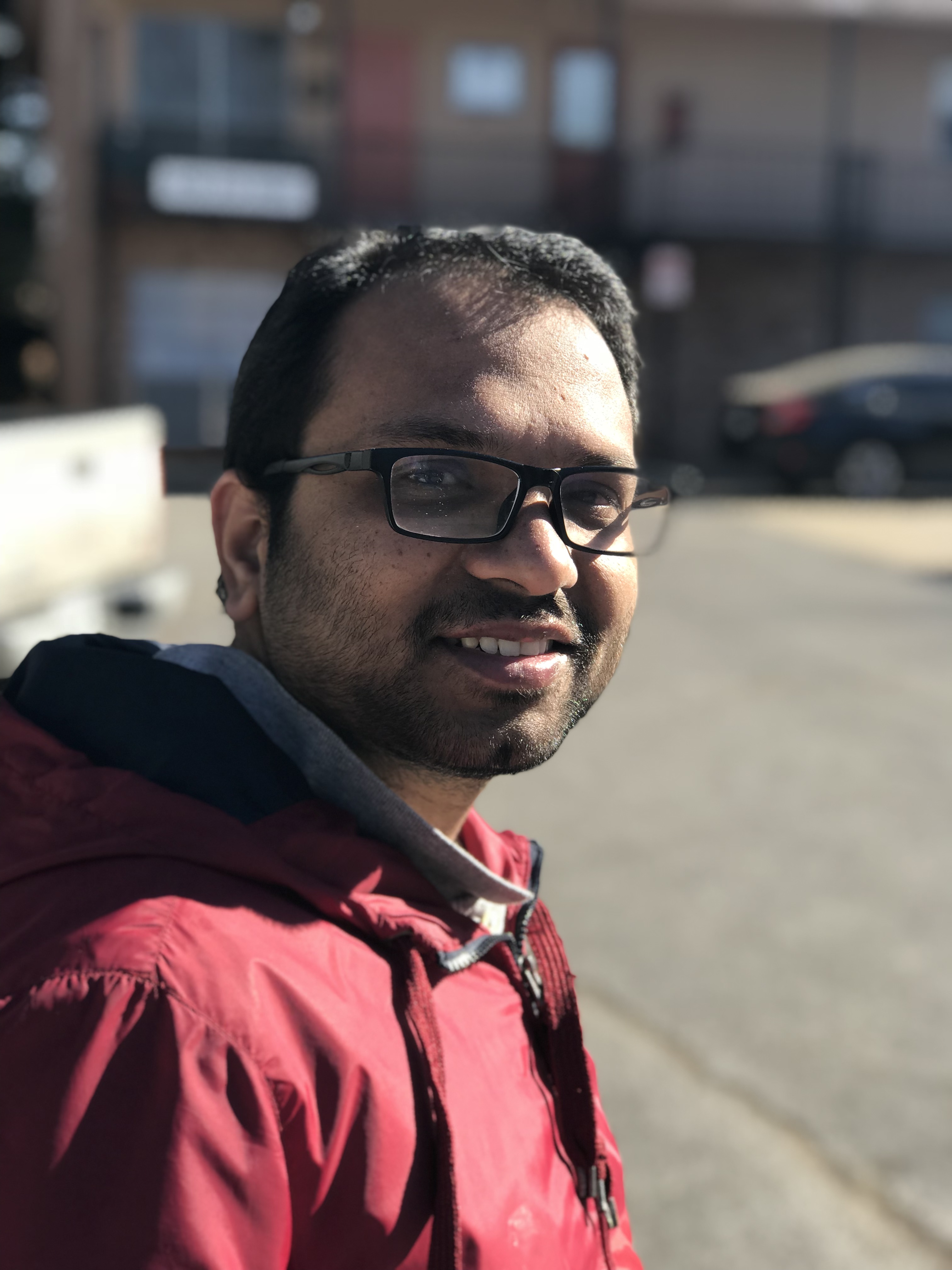
Title: Nanoscale bending properties of bio-inspired Ni-graphene nanocomposites
Keynote
Dr. Raghuram Reddy Santhapuram
R&D Engineer, INTEL, USA
Abstract
At the nanoscale, bone consists of a hierarchical structure of mineral crystals (hard material) and collagen (soft material). Inspired by bone’s nanoscale structure and properties, we design a nanocomposite with flexible pristine/polycrystalline graphene embedded in a hard Ni matrix. We model Ni graphene nanocomposites, with different structural arrangements for graphene in the Ni matrix. We use molecular dynamics to investigate the deformation of Ni-graphene nanocomposites under 3-point bending. We find that nanocomposites can deform approximately 30% more than pure Ni. The flexibility of the nanocomposite is optimally enhanced with a distance between graphene sheets greater than or equal to 3.05 nm. Polycrystalline graphene nanocomposites show approximately 15–20% improvement in bending modulus compared to pristine graphene nanocomposites. The increase in bending modulus of polycrystalline graphene nanocomposite is because polycrystalline graphene has higher interfacial shear strength compared to pristine graphene. We also find that the structural arrangement of graphene sheets is more important than increases in their volume fraction in the Ni matrix. These results suggest that graphene sheets scattered in the Ni-matrix is preferable to other structural arrangements. The results from this simulation could help in tuning nanocomposite with desired mechanical properties for various engineering applications.
Biography
Raghuram Reddy Santhapuram has completed his PhD from the Department of Mechanical Engineering, University of Arkansas, USA. He has published research articles in reputed journals in the field of composite materials, tribology/surface science. He has been working as the Test R&D Engineer at INTEL since his graduation and developing a world class facility in testing the INTEL products.

Title: Advanced biomaterials used in innovative biomedical applications
Plenery talk
Prof. Daniel Laura buruina
Dunarea de Jos University of Galati, Romania
Abstract
Current challenges in biomaterials science consist in obtaining complex multifunctional materials by tissue engineering. During recent years, biomimetic strategy has been considered an ideal solution for growing adherent remineralized layers onto mature enamel affected by sub micrometer erosion and initial carious lesions, whereas problems of secondary effects as marginal leakage, hypersensitivity, weak adhesion over time and secondary caries at the interface between the original enamel and the filling materials were eliminated. Thus, growth of synthetic enamel-like materials with good adhesion and dense interface to the original enamel of teeth has been of high interest. This paper focuses on systematic study of compositional, structural and nano- to mesoscale morphological changes occurring between 4 and 10 days of biomimetic growth of synthetic HAP and CS-HAP layers grown directly onto demineralized natural enamel by using commercial Emdogain as source of proteins in preparation of extracellular hydrogels through a modified method.
Biography
Daniela Buruiana is Head of Department of Materials and Environmental Engineering (DIMM), Faculty of Engineering, 2020-present: Head of Interdisciplinary Research Centre in the Field of Eco-Nano Technology and Advance materials CC-ITI. She has published more than 37 published ISI articles, 7 published books, 30 conference entries and 17 awards given at conferences and projects.

Title: Review of Latest Innovations in the Area of Bio-based Fiber Reinforced Composites.
Invited talk
Dr. Rama Bhadra Raju Vuppalapati
Senior Materials Engineer, USA
Abstract
Petroleum-based plastics have become an indispensable part of our daily lives. From bicycle helmets to medical equipment, they can be found in a vast array of everyday products. Research and development of sustainable, environmentally friendly, and biodegradable materials has become crucial considering growing environmental concerns. Biomaterials have the potential to address the major problems facing our generation, such as global warming, the potential depletion of fossil fuels, and waste management. With their exceptional performance including high strength-to-weight ratios, excellent fatigue, design flexibility and corrosion resistance, biocomposites show great potential to replace petroleum-based materials. The components of biocomposites are biodegradable polymers and natural fibers. Compared to their petroleum-based counterparts, biocomposites offer additional benefits, such as enhanced damping properties, abrasion resistance, fatigue life, thermal and acoustic insulations, and health safety. This presentation provides an overview of biofibers, bioplastics, various production methods, their respective treatments, and their applications.
Biography
Petroleum-based plastics have become an indispensable part of our daily lives. From bicycle helmets to medical equipment, they can be found in a vast array of everyday products. Research and development of sustainable, environmentally friendly, and biodegradable materials has become crucial considering growing environmental concerns. Biomaterials have the potential to address the major problems facing our generation, such as global warming, the potential depletion of fossil fuels, and waste management. With their exceptional performance including high strength-to-weight ratios, excellent fatigue, design flexibility and corrosion resistance, biocomposites show great potential to replace petroleum-based materials. The components of biocomposites are biodegradable polymers and natural fibers. Compared to their petroleum-based counterparts, biocomposites offer additional benefits, such as enhanced damping properties, abrasion resistance, fatigue life, thermal and acoustic insulations, and health safety. This presentation provides an overview of biofibers, bioplastics, various production methods, their respective treatments, and their applications.
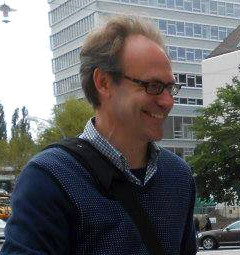
Title: Living electronics, living materials: a synthetic biology approach.
Plenery talk
Prof. Per Arvid Löthman
Foviatech GmbH, Hamburg, Germany; Kaiserslautern University of Applied Science, Zweibrücken, Germany
Abstract
Electrical phenomena are not limited to physics or engineering applications but are just as abundant in biology. To extract and store energy, control molecular reactions and enable multicellular communication are instances where electrical phenomena plays a dominat role in biology. Especially, microbes have evolved genetically encoded machinery enabling them to utilize the abundant redox-active molecules. Synthetic biology is allowing for the use of these machinery as components of engineered living materials with tuneable electrical properties. Meanwhile, a large number of such living electronic components including wires, capacitors, transistors, diodes, optoelectronic components, spin filters, sensors, logic processors, bioactuators, information storage media and methods for assembling these components into living electronic circuits have been identified and research is constantly increasing in this field. Synthetic biology applies genetic tools to engineer living cells and organisms analogous to the programming of machines. In materials synthetic biology, engineering principles from synthetic biology and materials science are integrated to redesign living systems as dynamic and responsive materials with emerging and programmable functionalities. Here we focus on living electronics and living materials and elucidate the role of synthetic biology in this emerging field.
Biography
Dr. Per A. Löthman obtained his Ph.D. degree from Twente University , The Netherlands in the field of Macroscopic Magnetic Self-assembly and conducted research in Canada, France and Germany on carbon nanotubes, Graphen and related nanomaterials. His research is interdisciplinary and involve BioNanotechnology including DNA, S-layers, Viruses (archaea, bacteriophages), Biomolecular Architecture. Botany and functional surfaces. Dr. Löthman has published over 60 scientifical articles, several book chapters and serves as a reviewer for several journals such as Journal of Bioanalytical and Analytical Chemistry, Journal of Colloid and Interface Science, Thin Solid Films, Sensors and Actuators, Microsystems Technologies, Biophysical Reviews and Letters, He is Senior Research Scientist at Foviatech GmbH in Hamburg, Germany, a young innovative high-tech company in the field of advanced materials and artificial intelligence, and a lecturer in Nanomedicine, Nanopharmacy and Nanomaterials (Kaiserslautern University) and Mechatronics Systems and Design (Hamburg University), Germany.

Title: Hot-pressed Saloplastics as Sustainable Ion-exchange Membranes
Invited talk
Dr. Ameya Krishna
MESA+ Institute of Nanotechnology, University of Twente, Netherlands
Abstract
Polymer-based ion-exchange membranes have benefitted a wide range of processes, ranging from fuel cells to desalination. However, challenges such as alkaline stability, monovalent ion selectivity, cost-effectivity, and process sustainability largely persist. This work uses polyelectrolytes such as poly(styrenesulfonate) (PSS) and poly(diallyldimethylammonium) (PDADMA) as the starting point to make ion-exchange membranes by hot-pressing. This completely aqueous production approach leads to non-porous alkaline stable saloplastics with an excess of cationic groups, demonstrating good stability even at relatively high salinities. Key performance indicators for anion exchange membranes, such as water uptake (~40%), permselectivity (up to 97%), ion exchange capacity (1.01 mmol g-1), and resistance (2.3 ohm.cm2) are measured and the membranes show comparable values to commercial membranes. What sets these membranes apart is their natural stability at extreme acidic (pH 0) and alkaline conditions (pH 14), and a relevant monovalent selectivity of up to 6.3 for Cl- over SO42-. They were successfully demonstrated as monovalent selective for sodium-potassium separations, as well as hydroxide selective for peroxide applications relevant in key industries. Overall this work showcases dense saloplastics as promising and stable ion-exchange membranes, that can be produced by a simple, scalable, and sustainable approach.
Biography
Dr. Ameya Krishna B is a scientist in sustainable membrane materials at the MESA+ Institute of Nanotechnology, University of Twente, and the European Membrane Institute. He works on green materials for membrane separations, especially ion exchange, for applications in desalination, fuel cells, and green house agriculture. He received a bachelor's degree in Chemical Engineering from BMSCE Bengaluru, India, a master’s in Chemical and Energy Engineering from the University of Magdeburg, Germany, and a Ph.D. in Membrane Materials aterials for Energy from the University of Twente. He is the recipient of numerous awards including the David Reinout Award and Rotary Youth Icon Award, as well as several mentions in scientific media.
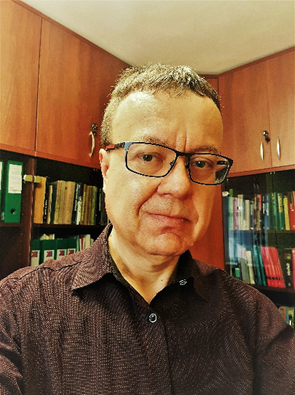
Title: Cycloidal spin ordering and perovskite-like structure of multiferroic BiFeO3 -‑ Mössbauer spectrometry study
Keynote
Prof. Tadeusz Szumiata
University of Technology and Humanities in Radom, Poland
Abstract
BiFeO3 belongs to the multiferroic class of materials. It is a rare example of a material that combines ferroelectric and magnetic orderings in a single phase as well as cycloidal modulation of spins arrangement at room temperature. It opens new perspectives for the development of spintronics, micromechanics, photovoltaics and electrochemistry. The crystal structure of BiFeO3 can be viewed as a rhombohedral distortion of the ideal perovskite cell. There are two kinds of deformations with respect to the ideal perovskite structure: (1) relative polar displacement of Bi3+ and Fe3+ ions along the [111] pseudocubic direction and (2) opposite rotation of the oxygen octahedra around the [111] axis in the adjacent cells. It was proved that the first one reduces crystal symmetry from cubic (Pm3m) to the rhombohedral (R3m) and leads to the appearance of spontaneous polarization along the diagonals of the pseudocubic unit cell. The second one causes further lowering of the symmetry to the R3c space group and, it is believed to determine the spin canting and weak ferromagnetism in this system. The present work is mainly focused on the Mössbauer spectrometry application in the effective monitoring of spic cycloid in nanocrystalline and La-doped BiFeO3. It was proved that the spin cycloid does not disappear even when average grain size is well below the cycloid modulation period λ = 62 nm. Furthermore, the cycloid becomes more anharmonic as the grain size decreases. In the case of Bi1–xLaxFeO3 the cycloidal spin ordering started to disappear at x = 0.07.
Biography
Assoc. prof. Tadeusz Szumiata is a Head of the Physics Department in the Faculty of Mechanical Engineering at the University of Technology and Humanities in Radom (Poland). He was born in 1970, he obtained a Doctorate in Solid State Physics in 2002 in the Institute of Physics of the Polish Academy of Sciences in Warsaw. He does research in Environmental Science, Nanomaterials Engineering, Multiferroic Compounds, Defectoscopy, Fundamental and Industrial Mass Metrology as well as Metal-Organic Chemistry by applying magnetic methods and Mössbauer spectrometry. He is also a specialist in the modelling of magnetic anisotropy, magneto-mechanical effects as well as spin-dependent tribological phenomena. He published more than 60 papers cited in more than 500 documents. He works as a guest editor of high-score MDPI Materials Special Issues and a reviewer in over a dozen of peer-reviewed international journals. He is one of the founders and vice president of the Polish Society of Mössbauer Spectroscopy and an active member of Le Groupe Francophone de Spectrométrie Mössbauer (GFSM). He also worked as an expert for the Central Office of Measures in Warsaw and was the first technical delegate of Poland to Bureau international des poids et mesures (BIPM) in Sèvres in order to visit a new kilogram standard facility after the redefinition of the international system of units (SI) in 2018. Recently he has been invited to the international scientific committees of several major international conferences: International Symposium on the Industrial Applications of the Mössbauer Effect (ISIAME2022 and ISIAME2024), International Conference on Advanced Materials, Nanosciences and Applications and Training School in Spectroscopies for Environment and Nanochemistry (ICAMANA2022) as well as Soft Magnetic Materials Conference (SMM2019).

Title: Advanced solid electrolytes for all-solid-state lithium batteries
Invited talk
Dr. Feipeng Zhao
MME Department, Western University, Canada
Abstract
All-solid-state lithium batteries (ASSLBs) employing solid electrolytes (SEs) offer improved energy density and safety compared to their liquid electrolyte counterparts. The performance of ASSLBs is critically dependent on the choice of SEs. A qualified SE is typically required, possessing both high ionic conductivity and excellent compatibility with electrodes on both the anode and cathode sides. However, due to the relatively slow lithium-ion transport in solid electrolytes compared to the liquid electrolytes used in commercial lithium-ion batteries, most inorganic SSEs exhibit insufficient effective ionic conductivity to support operational ASSLBs. Furthermore, achieving interface compatibility between conventional SEs and electrodes remains a challenge due to inherent chemical mismatches.
In our work, we have developed advanced inorganic SEs that not only exhibit high conductivity comparable to liquid electrolytes but also demonstrate excellent stability at the electrode interfaces, including those with Li metal and layered metal oxide cathode materials. Additionally, we have implemented interface modifications to mitigate interface mismatches in ASSLBs, enabling high-performance operation over a wide range of temperatures. Our studies on SEs and ASSLBs contribute significantly to advancing the practical application of ASSLBs.
Biography
Feipeng Zhao is currently a Mitacs Elevate Postdoc Research Fellow at Western University in Canada. He received the Ph.D of Materials from Western University in 2021. He obtained his Master and Bachelor degrees in Materials Science from Soochow University, China. He is working on the synthesis and advanced characterizations of incoranic solid electrolytes for secondary batteries. He also serve as a guest editor of Batteries MDPI ( special issue: “Solid-State Lithium Batteries: From Fundamentals to Commercialization”), and an associate editor of “Frontiers in Materials: Energy Materials”. His work has received a citation of over 7500 times with a H-index of 48.

Title: Atomistic modeling in electrocatalysis: Towards designing active & stable electrocatalysts for fuel-cell applications
Invited talk
Dr. Shubham Sharma
Senior Scientist, Computational Materials Science at Pfizer Inc, USA
Abstract
The modern world's growing energy demands require the development of cost-effective and durable electrocatalysts to support sustainable energy conversion and storage technologies like proton-exchange membrane fuel cells (PEMFCs). However, the large-scale commercialization of fuel-cell technologies suffers from cost, performance, and durability. Most of the challenges are attributed to the sluggish oxygen reduction reaction (ORR) at the cathode; this necessitates the use of high overpotential which directly lowers the efficiency of the fuel cell. Recent efforts in the electrocatalysis community have focused on developing cost-efficient and durable ORR catalysts. These studies involve tackling the limitations of the cathodic half-cell by incorporating Pt-based alloys as potential ORR catalysts. In this talk, I present insights towards developing design principles using atomistic modeling for active and stable Pt-based ORR electrocatalysts. First, I will discuss the effect of strain and ligand on ORR thermodynamics using density functional theory (DFT). Second, I will discuss modeling approaches to understand the stability of core-shell electrocatalysts and finally, I will focus on understanding ORR kinetics on Pt electrodes with the help of a grand-canonical constant potential approach.
Biography
Dr. Shubham Sharma is a Senior Scientist, Computational Materials Science at Pfizer Inc, USA. Dr Sharma currently leads the Solid Form Design Center (SFDC) at Pfizer for de-risking medicines. Dr Sharma earned his PhD in Chemical & Environmental Engineering in 2021 from Brown University, USA followed by a postdoctoral fellowship in the Quantum Simulations Group at Lawrence Livermore National Laboratory, US. Dr Sharma’s expertise lies in field of computational materials science including heterogeneous catalysis, electrochemistry, electronic structure theory, crystal structure prediction, polymorphism, and drug development.

Title: REACH – Chemical Compliance is a Continuous Process
Invited talk
Dr. Renie Harbers
University of Twente, Netherlands
Abstract
REACH or EU regulation 1907/2006 came into force on June 1st, 2007 with a phaced implementtation over the next decades. It repalced a large amount European Directives and Regulation in one single system. This regualtion concerns the Registraion, Evaluation, Authorization and Restriction of Chemicals within the European union. REACH addresses production and use of chemical substances and their (potential) impacts on both human health and environment.
REACH enhances innovation and competitiveness witin the chemicals industry. REACH allows free movement of substances on the EU market. REACH aims to reduce animal testing by means of promoting alternative methods of assessing chemicals. Up to this date REACH it is the most complex legislation with in the EU. REACH is the strictest law up to date in regulating chemical worldwide. Althought it is an European regulation it will affect industries all over the world..
The EU chemicals agency (ECHA) is responsible for the technical, scientific and the adminstration of REACH within EU by the means of data in the form of dossiers from industry and providing guidance and assistance to industry and end-users.
Biography
Renie Harbers (Ir, Ing, MSc, BSc) studied Chemical Engineering at the University of Twente and has completed her Dutch Master of Science at the Department of Material Science and Technology of Polymers under the guidance of Professor J. G. Vancso. She worked over 20 years as a project (R&D) engineer for different highly valued companies like PPG, Royal Philips, SGS, ASML, Siemens, Pentair, TenCate Advanced Composites, Suzlon Ltd and Saint Gobain. She gained experience in different industries like: coatings industry, HighTech industry, Oil Industry, Water Treatment Industry, AirCraft Industry, Renewable Energy Industry and Construction Industry.
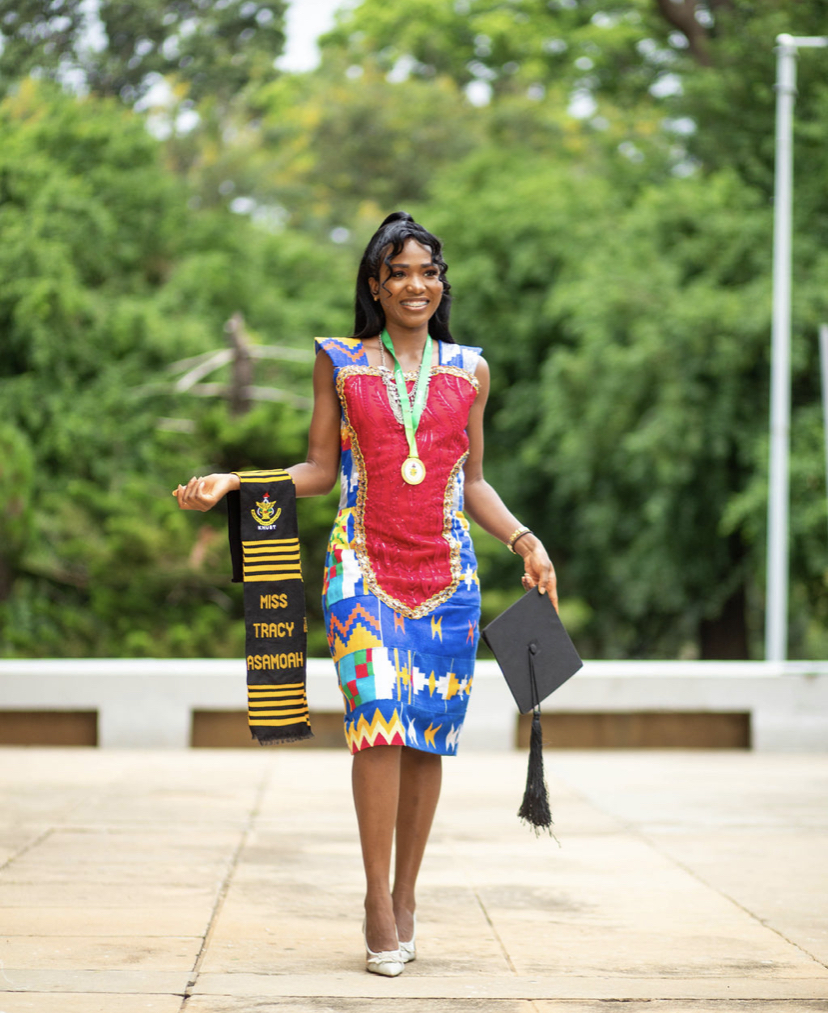
Title: Modification of erythritol based PCMS for Improved efficiency in solar cookers
Invited talk
Ms. Tracy Asamoah
Kwame Nkrumah University of Science and Technology, Ghana
Abstract
The performance of solar cookers depends on the energy storage systems used. Phase change materials are undeniable, the common TESS incorporated into solar cookers for optimal performance. PCMs though useful in solar cooking, cannot retain heat for long hours. Modified erythritol PCMs were worked on with the intent of increasing the heat retention capability. In this project,erythritol-PVA mixtures were used. All the mixturesimproved the efficiency of the PCM but the best mixture was the 30wt% PVA erythritol mixture achieved upon melting and solidification using temperature sensors for measurements. The FTIR spectra of the mixtures showed that the modification had no significant impact on the chemical characteristics of the erythritol-PVA mixtures which makes them ideal for solar cooking.
Biography
Ms. Tracy Asamoah is a research assistant at KNUST working on photochemical and electrochemical energy storage and conversion. She is currently working hydrogen storage in MOFs using graph neural networks.
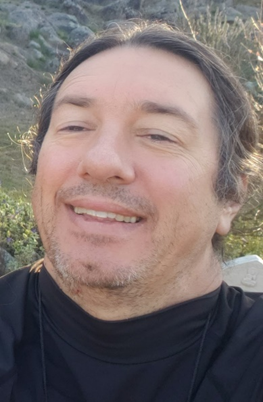
Title: Typical Zirconium Alloys Microstructures in Nuclear Fuels and Components
Invited talk
Dr. Pablo Vizcaino
CNEA, Argentina
Abstract
The different microstructures typically found in nuclear components made of zirconium-based alloys will be presented in this webinar. These include materials in a variety of thermo-mechanical conditions, e.g., cold rolled, stress relieved, recrystallized, welded, biphasic, together with minority second phases belonging to the original material or incorporated due to in-service conditions. The anisotropic crystalline structure of zirconium is exploited in microscopic observations by means of polarizer filters that enhance the contrast between different grains, and greatly aid the identification in most microstructures. Most microstructural variations across a wide range of length-scales, such as those produced by welding processes, can be effectively resolved by traditional optical microscopy (OM). However, some finer microstructures like those found in CANDU pressure tube material, or some minority second phase particles like the Zr(Fe,Cr)2 precipitates in Zircaloy-4 cannot be completely resolved by this technique. Thus, scanning electron microscopy (SEM), and transmission electron microscopy (TEM) are required in such cases. For SEM observations we show the valuable issue of the scale in specific microstructural studies, which allows quantifying microstructural parameters using image analysis. For TEM observations, we have greatly benefited from the electron diffraction diagrams, which have allowed us to investigate the crystalline structure of irradiated second phase particles, which would remain unnoticed to both, OM or SEM observations.
Biography
Dr. Pablo Vizcaino is a physicist from the Faculty of Exact and Natural Sciences of the Buenos Aires University. At postgraduate level he specialised in Materials Science and Technology, doing first a Master and then a PhD at the Instituto de Tecnología Jorge A Sabato, specifically in the hydrogen solubility in zirconium alloys and the effects of neutron irradiation on this system. Zirconium is a structural material used to manufacture components and fuel elements for nuclear power reactors and zirconium metallurgy is the expertise of Dr Vizcaino. He has supervised numerous research fellows, undergraduate thesis, master's degrees and PhDs. From 2012 to 2017, he directed the project for the manufacture of the Zr-2.5Nb pressure tubes for the refurbishment of the CANDU Nuclear Power Plant installed in Embalse, Córdoba, Argentina. Dr Vizcaino is Head of the Department of Zirconium Alloy Technology at the Argentine National Atomic Energy Commission (CNEA), Director of the Nuclear Engineering Career at the Dan Beninson Institute (CNEA/UNSAM), researcher at the National Council for Scientific and Technical Research (CONICET) and President of the Company of Combustibles Nucleares Argentinos (CONUAR SA).
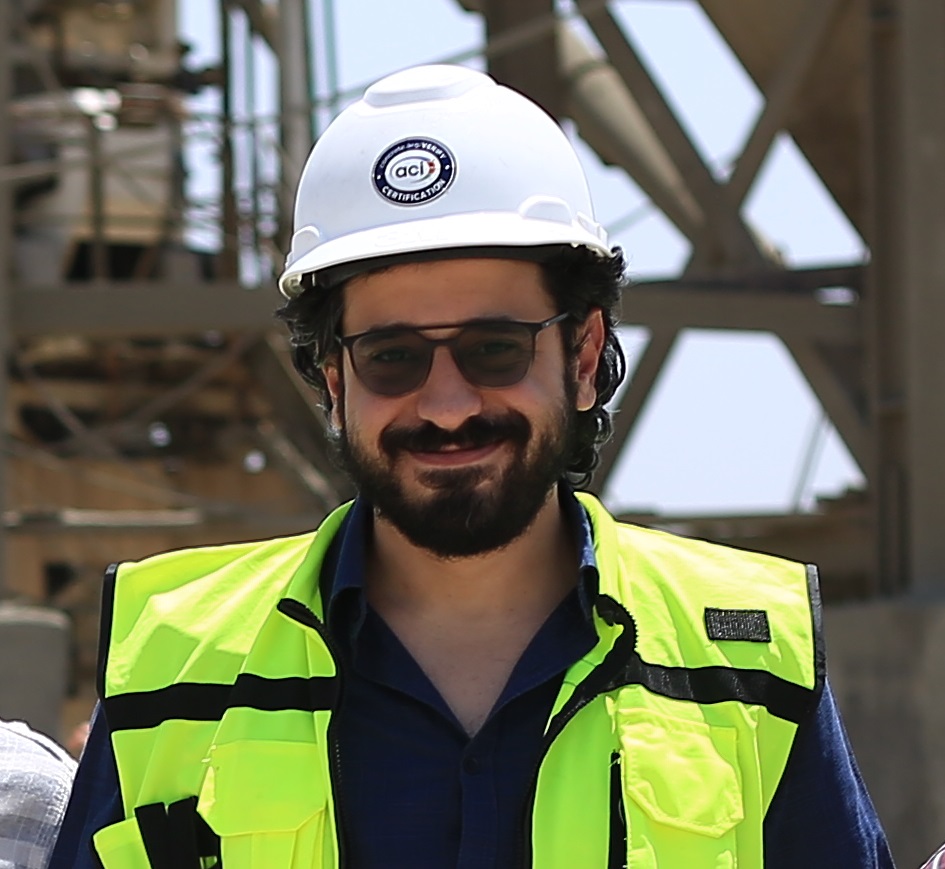
Title: Revolutionizing Emerging Markets for Sustainability and Cost-Efficiency in the cement and concrete industry
Invited talk
Mr. Sami Amer
Head of Concrete Department SG , Egypt
Abstract
In emerging markets, the concrete and cement industry stands at a critical crossroads, grappling with the urgent need for sustainability and cost optimization. These markets are vital contributors to the global carbon footprint due to rampant cement consumption, leading to excessive CO2 emissions. To address this, a transformative shift is imperative, involving optimized concrete mixes, reduced clinker ratios, and the integration of supplementary materials. Optimization strategies focus on enhancing concrete's performance while curbing its environmental impact. Lowering clinker ratios, a major CO2 source in cement production lessens emissions significantly. Incorporating supplementary materials, such as fly ash or slag, enhances concrete quality while reducing cement content. However, the transition to these innovative practices encounters staunch resistance. Decisionmakers entrenched in traditional methods are often hesitant to embrace change, driven by perceived risks in altering proven formulas. This resistance stems from concerns about structural integrity, project delays, and unfamiliarity with new specifications. Paradoxically, the entrenched practices not only contribute to environmental degradation but also escalate costs due to excessive cement use. The challenge lies in shifting mindsets and aligning stakeholders with the imperatives of sustainable development. Education and awareness campaigns are pivotal, showcasing the success stories of projects that embraced optimization strategies without compromising quality or timelines. Collaborative partnerships between governments, industries, and academia can foster research, develop local expertise, and establish internationally recognized standards.
Biography
Sami Amer, with more than 12 years in concrete, embraces a role as a civil engineer specializing in advanced concrete technology, sustainability, and quality management. Currently pursuing MSc in Advanced Concrete Technology from the University of Leeds and an American Concrete Institute-certified Concrete Quality Technical Manager, I'm privileged to lead El Soadaa Group's Concrete Division in Egypt, working alongside a skilled team to ensure reliable solutions for diverse projects. With a deep-seated commitment to minimizing concrete's environmental impact, I'm dedicated to sustainable development and renewable energy's transformative power for a better future.
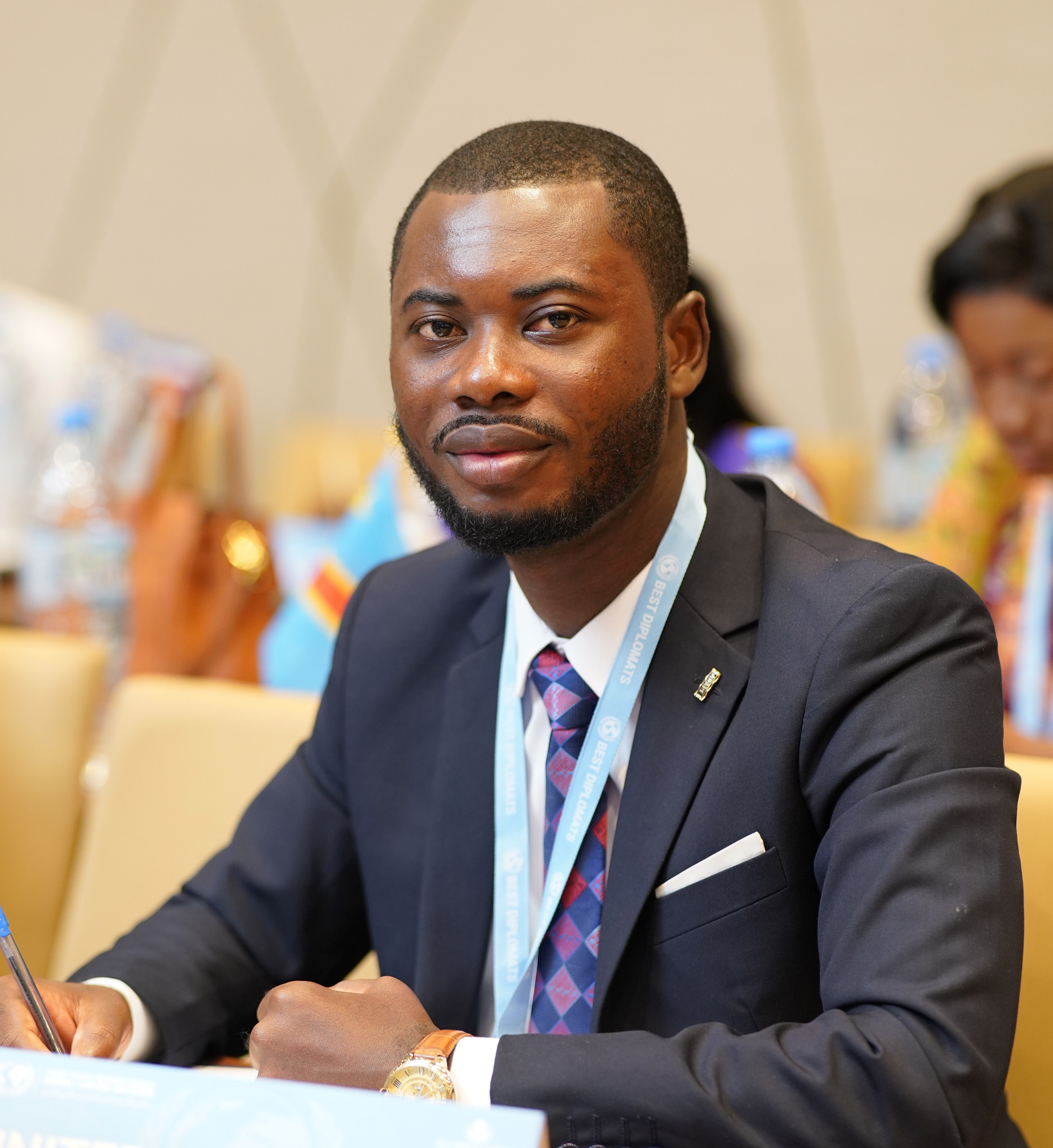
Title: Study of the effect of aging on the electrical conductivity of polyaniline (PANI) Doped with different acids.
Invited talk
Mr. Henry Yawson
Graduate, Kwame Nkrumah University of Science and Technology, Ghana
Abstract
The electrical conductivity of doped Polyaniline has been observed to be stable within three (3) months under two different environmental conditions, thus a controlled environment and an open environment where atmospheric conditions freely act. The chemical oxidation process was employed in forming PANI emeraldine salt using three different dopants, in this case, 1M, 2M, and 3M each of HCl, H2SO4, and Acetic acids at room temperature (30ºC). The measurement of the electrical conductivity of these samples was achieved using the four-point probe techniques, whilst the nanocomposite of these samples was characterized using UV-Vis and FTIR characterization methods. The UV-visible spectra reported a quinoid and benzenoid band at 1553 - 1596cm-1 and 1437 – 1496cm-1 respectively. With time, the electrical conductivity of each of the prepared samples with respect to its exposed environment, acid type, and the form to which it was left (powder or pellet) did show a negligible deviation from the initial readings made 1.183S/cm. Using the absorption spectra and the stern relation the band gap for all samples was obtained. This confirms the stability of the electrical conductivity of polyaniline dope with different acids within a three (3) months period. From the data gathered and by prediction, we can affirm that the application of PANI emeraldine salt in the electronic industry is highly feasible. Also, the general expectation for various electronic components is that the electrical conductivity of synthesized electronic components must be stable, and should stand out for a reasonable length of time, this has been realized with PANI emeraldine salt.
Biography
Mr. Henry Yawson is a graduate of the Department of Physics, Materials Science option from the Kwame Nkrumah University of Science and Technology. Conducting Polymers has been his major research field. Over the years he have studied in the department as well as New York University Abu-Dhabi the electrical properties of synthesized PANI and its impact on the electronic industry as a means of supporting the global fight against the rapidly evolving climate conditions. He envision a possible output in this field that contributes significantly to the global fight against the climate crisis. Encouraging and advocating for youth involvement in this space through diplomatic simulations has been interesting work, especially in Africa, Asia, and the Middle East.
“ Will be updated soon...”
+91 9491 456 452
Door No.200, Immidhihalli Main Road, Whitefield-560066, Bangalore, India
About Us
Global Scientific Guild organizes conferences and webinars to promote quality research and real world impact in an atmosphere of true international co-operation between scientists, doctors, professors, practitioners, engineers and industry by bringing together the world class renowned personalities to discuss the latest developments and innovations at one common platform.